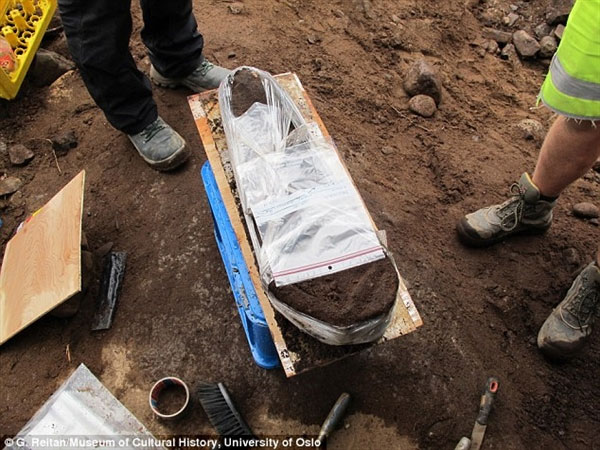Human brain lesions 8,000 years ago
Archaeologists have excavated the Norwegian skull about 8,000 years ago, which may contain the most ancient ruins of the human brain.
This discovery was made in the Stokke area, southwest of Oslo. Early results showed that it was the skull of a child less than 10 years old, while the adult body was buried in the grave.
The discovery was made by the implementation of the Oslofjord convention center.

The site of the excavation - (Photo: G. Reitan / Museum of Cultural History, University of Oslo)
The excavation project involved two sites of the same era in the Mesolithic era around 6000 BC.
Currently there is very little information about this period in Norway, so this area is of particular interest.
Gaute Reitan works for Oslo Cultural History Museum, the head of the excavation told the Daily Mail that normally in areas like these people only find labor tools, weapons, real waste Exporting, finding organic materials is extremely rare. In this area there are favorable geological conditions for bone to be well preserved and it is unexpected to be a child's skull.
In the skull with the gray matter, spongey, a little bit like clay. In the immediate future, there is no conclusion but it is likely that it is somewhat traces of the human brain.
With a size that is too small for adults, the research team considered the child's skull to be less than 10 years old. In this tomb, an adult's arm bone is found, and it can be a man, and deer antlers seem to be buried together.
In the near future experts will perform DNA testing and many other tests to determine the age and gender . Even the foods that people at that time used.
- Published a map of human brain
- The brain and the wonders
- The brain is well preserved 4,000 years
- Secret of taking advantage of the 'brain power' of 20 years old
- Detecting human brain preserved in mud layer for 2,600 years
- Shocking facts about the human brain
- 15 incredible facts about the brain
- 'Human brain' for the computer
- Set up the first 3D model of the human brain
- Healing of corneal lesions with contact devices
- Successfully cultured human brain in the laboratory
- The boy has lost 1/6 of his brain, after 3 years he still lives normally without knowing anything
 Discovered an ancient centipede fossil 99 million years old
Discovered an ancient centipede fossil 99 million years old Discovered bat-like dinosaurs in China
Discovered bat-like dinosaurs in China Discovered a 200-year-old bronze cannon of the coast
Discovered a 200-year-old bronze cannon of the coast Discover 305 million-year-old spider fossils
Discover 305 million-year-old spider fossils